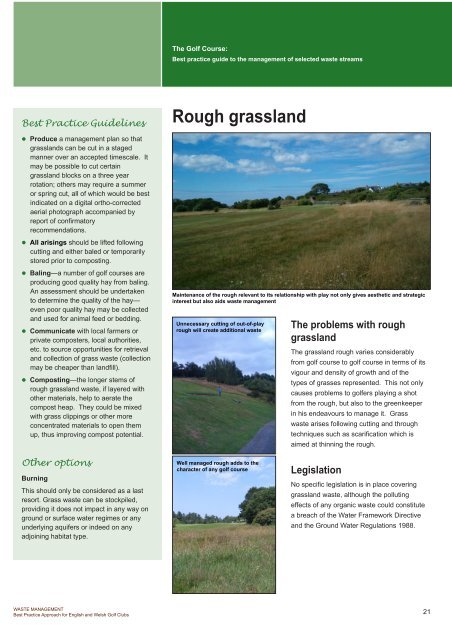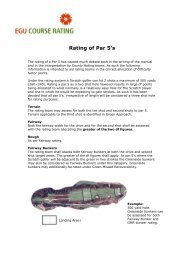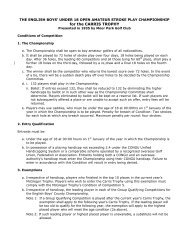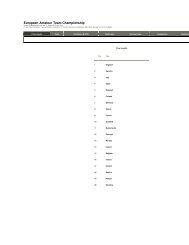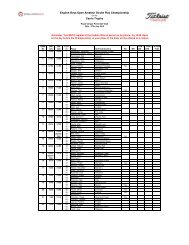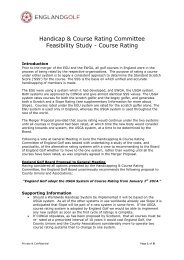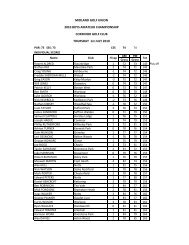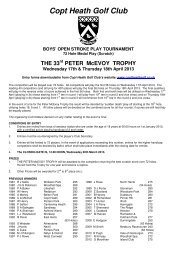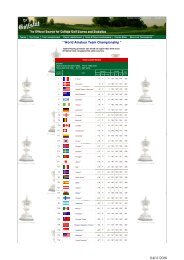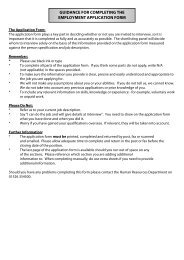Waste management - England Golf
Waste management - England Golf
Waste management - England Golf
Create successful ePaper yourself
Turn your PDF publications into a flip-book with our unique Google optimized e-Paper software.
The <strong>Golf</strong> Course:<br />
Best practice guide to the <strong>management</strong> of selected waste streams<br />
Best Practice Guidelines<br />
Rough grassland<br />
Produce a <strong>management</strong> plan so that<br />
grasslands can be cut in a staged<br />
manner over an accepted timescale. It<br />
may be possible to cut certain<br />
grassland blocks on a three year<br />
rotation; others may require a summer<br />
or spring cut, all of which would be best<br />
indicated on a digital ortho-corrected<br />
aerial photograph accompanied by<br />
report of confirmatory<br />
recommendations.<br />
All arisings should be lifted following<br />
cutting and either baled or temporarily<br />
stored prior to composting.<br />
Baling—a number of golf courses are<br />
producing good quality hay from baling.<br />
An assessment should be undertaken<br />
to determine the quality of the hay—<br />
even poor quality hay may be collected<br />
and used for animal feed or bedding.<br />
Communicate with local farmers or<br />
private composters, local authorities,<br />
etc. to source opportunities for retrieval<br />
and collection of grass waste (collection<br />
may be cheaper than landfill).<br />
Composting—the longer stems of<br />
rough grassland waste, if layered with<br />
other materials, help to aerate the<br />
compost heap. They could be mixed<br />
with grass clippings or other more<br />
concentrated materials to open them<br />
up, thus improving compost potential.<br />
Maintenance of the rough relevant to its relationship with play not only gives aesthetic and strategic<br />
interest but also aids waste <strong>management</strong><br />
Unnecessary cutting of out-of-play<br />
rough will create additional waste<br />
The problems with rough<br />
grassland<br />
The grassland rough varies considerably<br />
from golf course to golf course in terms of its<br />
vigour and density of growth and of the<br />
types of grasses represented. This not only<br />
causes problems to golfers playing a shot<br />
from the rough, but also to the greenkeeper<br />
in his endeavours to manage it. Grass<br />
waste arises following cutting and through<br />
techniques such as scarification which is<br />
aimed at thinning the rough.<br />
Other options<br />
Burning<br />
This should only be considered as a last<br />
resort. Grass waste can be stockpiled,<br />
providing it does not impact in any way on<br />
ground or surface water regimes or any<br />
underlying aquifers or indeed on any<br />
adjoining habitat type.<br />
Well managed rough adds to the<br />
character of any golf course<br />
Legislation<br />
No specific legislation is in place covering<br />
grassland waste, although the polluting<br />
effects of any organic waste could constitute<br />
a breach of the Water Framework Directive<br />
and the Ground Water Regulations 1988.<br />
WASTE MANAGEMENT<br />
Best Practice Approach for English and Welsh <strong>Golf</strong> Clubs<br />
21


